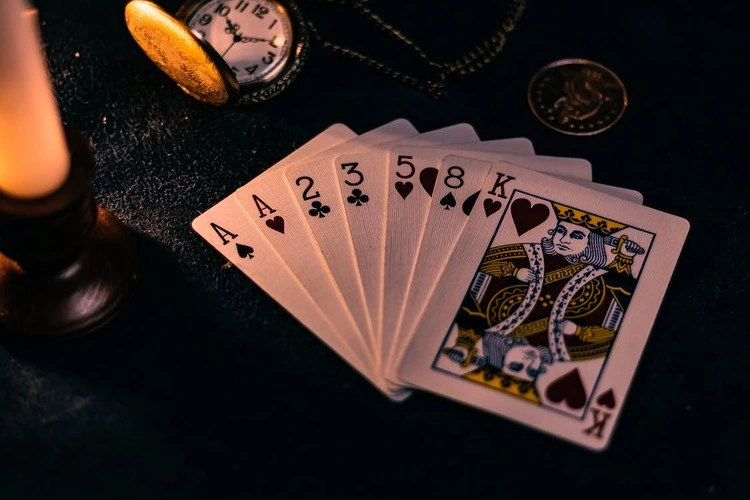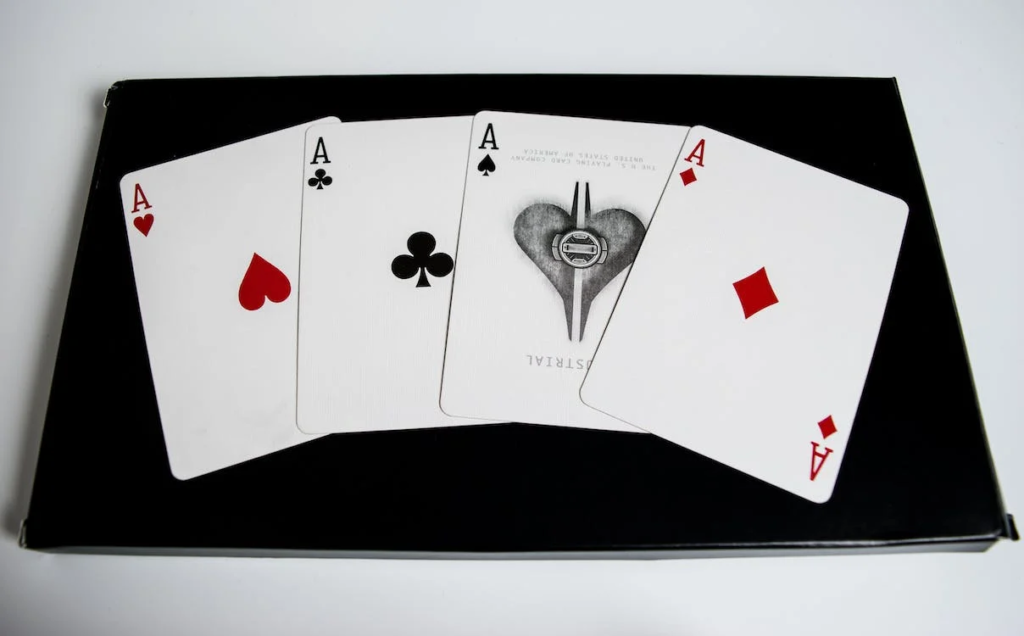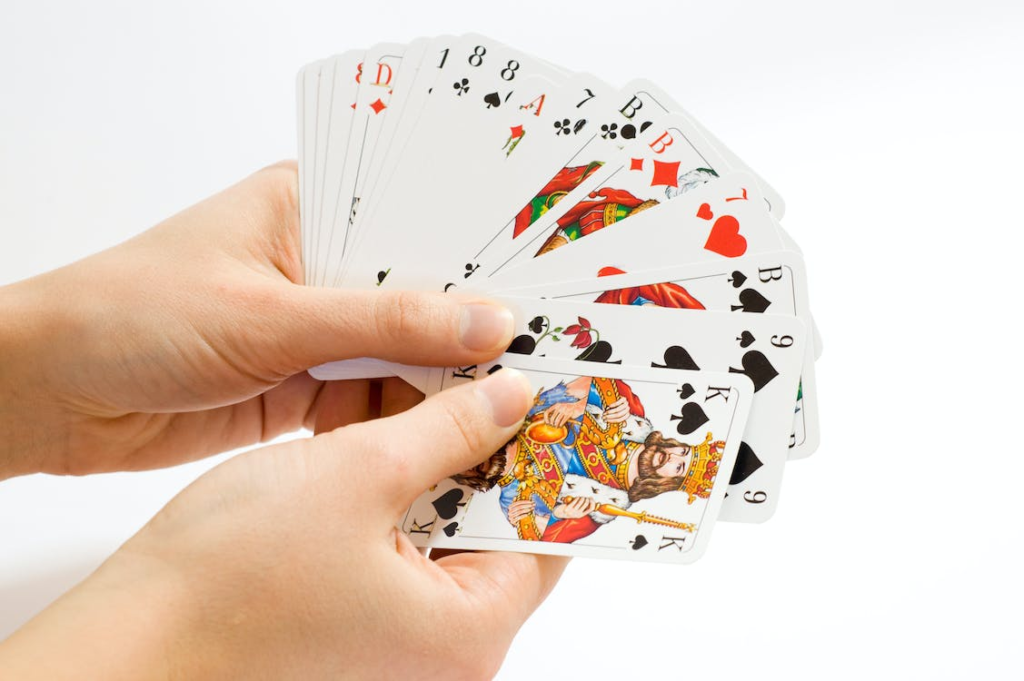Are you that group friend who doesn’t know card game rules? And when your friends are playing cards, you are usually left out. Then we are here to help you learn basic card rules so you can also enjoy this age-old game. In this article, we’ll discuss how many cards in a deck are. So read every part carefully so you can also enjoy playing cards with your group.

What Are Card Decks?
Card decks have been played through ages in many areas of the world. These card decks are a collection of rectangular paper or plastic cards played with pleasure, strategy, and mystery. Card games are played both with real cards and online. These decks are also used in magic tricks and have historical significance. They are important to our leisure time, bringing people together for hours of entertainment, challenge, and skill.
It’s amazing how this traditional game has entered the digital era via social media platforms. Card collectors worldwide increasingly use social media platforms to display their unique card collections, remarkable card tricks, and fascinating tricks.
We will discuss the mysteries and stories behind these cards, diving into their rich history and the evolution of diverse deck types.
Also Read: Fmovies – 17 Alternatives
How Many Cards in a Deck Are There?
A regular deck of cards has 52 cards in it. Hearts, diamonds, clubs, and spades are the four suits of these cards. Each suit has 13 cards: an ace, numbered cards from 2 to 10, and three face cards (jack, queen, and king).

Some decks could include two extra jokers, frequently used as wild cards in many card games. So, a conventional deck contains 52 cards or 54 if the jokers are included. Let’s go over the specifics of each type of card in a normal deck:
1- Hearts
- Ace of Hearts: The Ace of Hearts is regarded as the highest-ranking card in many card games. The core of the design is usually a huge heart, and other tiny hearts are around it.
- Numbered Cards (2–10 of Hearts): These cards are simple and carry their face value. The value of the 2 of Hearts is 2, the 3 of Hearts is 3, and so on.
- Jack of Hearts: The Jack of Hearts is one of the three face cards in the hearts suit and is usually represented as a young man carrying a single heart.
- Queen of Hearts: The Queen of Hearts is another face card frequently shown as a queen with a regal expression holding a heart.
- King of Hearts: The monarch of Hearts is the third face card in the hearts suit and often depicts a monarch with a mustache and a sword grasping a heart.
2- Diamonds
- Ace of Diamonds: The Ace of Diamonds, like the Ace of Hearts, is one of the highest-ranking cards. It usually has a huge diamond shape to it.
- Numbered Cards (2 to 10 of Diamonds): The 2 of Diamonds is worth 2 points, the 3 of Diamonds is for 3 points, and so on.
- Jack of Diamonds: The Jack of Diamonds is one of the face cards in the diamond suit and is frequently shown as a fashionable figure grasping a diamond.
- Queen of Diamonds: The Queen of Diamonds is another face card typically represented as a lovely queen holding a huge diamond.
- King of Diamonds: The third face card in the diamond suit, the King of Diamonds, depicts a king with a crown and scepter clutching a diamond.
3- Clubs
- Ace of Clubs: Another high-ranking card on the deck often contains a huge club symbol.
- Numbered Cards (2–10 of Clubs): The point values of these cards correspond to their numbers, with the 2 of Clubs earning 2 points, the 3 of Clubs for 3 points, and so on.
- Jack of Clubs: The Jack of Clubs is one of the face cards in the club’s suit and is frequently represented as a guy clutching a club symbol.
- Queen of Clubs: The Queen of Clubs is another face card often depicted as a royal queen clutching a club emblem.
- King of Clubs: The third face card in the club’s suit, the King of Clubs, is frequently shown as a king with a club.
4- Spades
- Ace of Spades: The Ace of Spades is not only the highest-ranking card in the spades suit, but it is also noted for its unusual style, which includes a big spade symbol. In certain cultures, it is called the “Death Card.”
- Numbered Cards (2 to 10 of Spades): The point values of these numbered cards match their numbers, with the 2 of Spades worth 2 points, the 3 of Spades for 3 points, and so on.
- Jack of Spades: The Jack of Spades is one of the three face cards in the Spades suit and is frequently represented as a guy wielding a sword.
- Queen of Spades: The Queen of Spades is another face card often shown as a stern queen clutching a huge spade symbol.
- King of Spades: The third face card in the spades suit, the King of Spades, is commonly shown as a king holding a sword and a spade emblem.
5- Jokers
Some decks feature two joker cards, used in card games as wild cards. Jokers do not belong to any suit and have their own distinct designs that can vary greatly between decks.
Also Read: Gimkit
Historical Evolution of Card Decks
The history of card decks spans centuries and different continents. We’ll look at how card decks evolved from their ancient origins to the standardized playing cards we know today:
Ancient Origins
Card games have a long and complicated history, with some of the first known playing cards dating back to China’s Tang Dynasty in the 9th century. These early cards were most likely used for games other than the traditional deck-based games we know today.
Introduction to Europe
Playing cards first appeared in Europe in the late 14th century, most likely brought back by Crusaders or traders from the Middle East. The suits were transformed into hearts, diamonds, clubs, and spades in Europe. These suits represented the four classes of medieval society: clergy, nobility, merchants, and peasants.
Decks from Early Europe
Early European card decks had a wide range of styles and card counts, with some decks comprising as few as 32 cards. These decks’ face cards frequently depicted historical and mythological people.
Spread to the Islamic World
In the 10th century, playing cards went from China to the Islamic world. Cups, coins, swords, and polo clubs were common suits on Islamic cards, representing the region’s culture and interests.
The 52-Card Deck and Standardization
Over time, a regular 52-card deck became Europe’s most popular and commonly utilized format. Each suit has 13 ranks, including the ace, numbered cards, and three face cards (jack, queen, and king). This uniformity aided in the evolution of card games such as poker, bridge, and solitaire.

Regional Variations
Different countries and areas produced their own playing card variations, each with their own suits and designs. Tarot cards in Italy and the Piquet deck in France are two examples you might have seen in movies.
Globalization and Expansion
European explorers and colonialists introduced Playing cards to numerous parts of the world, developing diverse regional decks and card games. Local cultural themes were included in the patterns and meanings of the cards in several circumstances.
Contemporary Variations and Customization
Aside from normal decks, modern times have seen an increase in the number of custom decks catering to individual interests, hobbies, and themes. The Gathering and Yu-Gi-Oh! have popularized unique card designs and intricate gameplay.
Card Games in the Digital Age
With the development of digital technology, online card games, mobile apps, and virtual card collections have emerged, altering how people play and interact with cards.
Cultural Importance
Playing cards have been used for divination, education, and creative expression throughout history, in addition to enjoyment.
The history of card decks demonstrates the continuing popularity of these simple yet flexible tools. Card decks continue to engage and unite people worldwide, from their humble roots in ancient China to their global significance in today’s gaming and entertainment culture.

Conclusion
The simple question of how many cards are in a deck reveals a rich tapestry of history, culture, and inventiveness. A standard 52-card deck has become a global instrument for magic tricks and recreational activities worldwide. From its ancient origins in China to its transformational journey through the Islamic world and final arrival in Europe, the deck of cards has adapted and transformed, becoming a symbol of human inventiveness and ingenuity.






Got a Questions?
Find us on Socials or Contact us and we’ll get back to you as soon as possible.